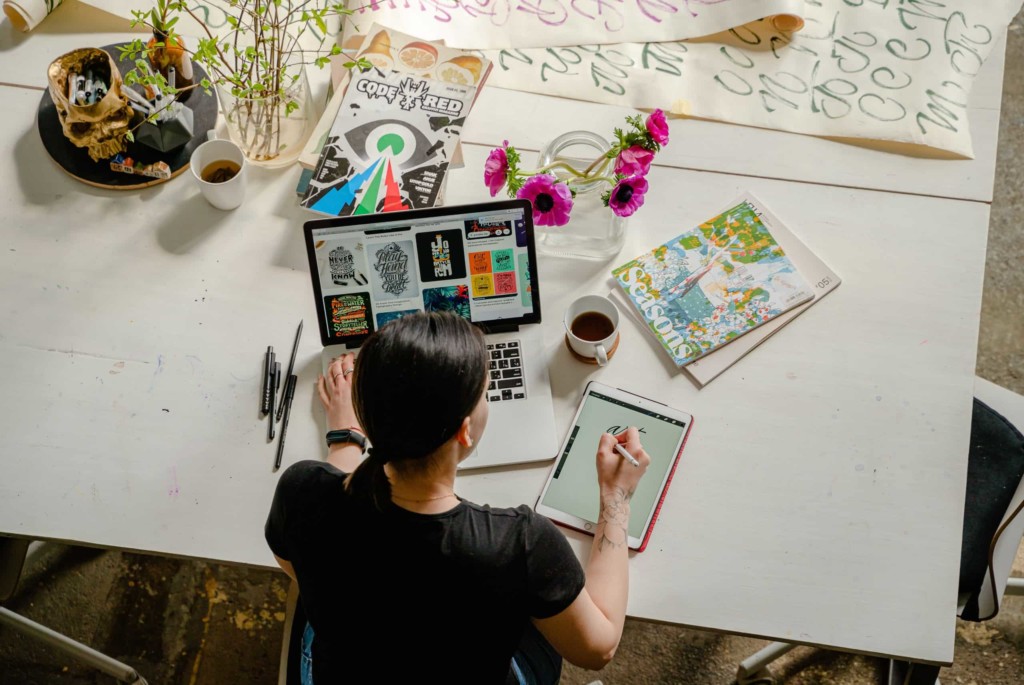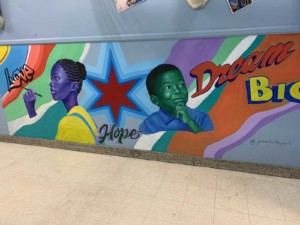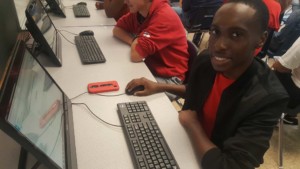Expressing Learning Journeys Through Digital Portfolios

A few years ago I started having students in my Spanish II, III, and IV classes work on creating a digital portfolio using Google Sites. At the time, I was working on my Master’s degree and had to design my own Google site portfolio to show how I met all of the instructional technology standards addressed in my coursework. Aside from my student teaching experience many years ago, when I used a photo album for my portfolio, I have not needed to create one since. While the goal of creating a portfolio then is the same as it is now, paper portfolios are not as easily accessible as digital formats. As I finished my own digital portfolio in 2016, I thought that having students create their own would not only build their language skills but also better prepare them for their future.
The idea came to me initially after we used Wikispaces to create a travel agency in Spanish III. As students in groups built a “real” service, they were more engaged in learning, working collaboratively, and applying their learning in a more authentic way. They could all access the site from wherever they were and update it as needed. Once I had them creating together virtually, I decided to provide additional opportunities for them to build other essential technology skills and create their online presence. From that point on I started to use Google Sites as a way to not only house their Spanish projects but to guide them to create their own digital portfolios, so they had evidence of their high school learning journey when they graduated.
Benefits of portfolios
In our work as educators, it is important that we help students to build their skills over time and focus more on the learning process rather than the end product. The idea behind digital portfolios is to provide a space where students can build a narrative of their work. Using digital tools to build portfolios enables students to be better able to track the work that they’ve done, to find it when they need it, and to of course share their work with their family, classmates, the school community, and in the workplace.
Students will become more confident in their learning as they build social-emotional learning (SEL) skills, specifically in self-awareness. Students will focus on setting goals and decision-making when it comes to deciding what to put into their digital portfolio. As they explore the evidence of the work that they have done, their focus begins to shift to the process of learning itself and encourages more self-reflection. It is important that we help guide students as they prepare their portfolios by engaging them in conversations and self-assessments.
The use of portfolios promotes a culture of learning in the classroom. As students prepare their portfolios, they can share their work with peers, reflect on their own growth and seek feedback from one another. Through these experiences, students develop a greater awareness of their interests and skillsets, and seeing authentic evidence of learning will help students as they plan their next steps after high school.
Creating the right space
There are a variety of tools for creating digital portfolios including the use of tools for blogging, content curation, presentation, or video responses. We can quickly get started with Google Slides, which is something I had done with students in my Spanish I classes. In my application to become an ISTE Certified Educator, I had to create a portfolio showing how I had met each of the ISTE Standards. I created several separate Google Slides presentations which enabled me to see my growth and more easily share it with others.
Here are some options to consider that will encourage students to create and share their learning in a way that is more authentic and meaningful.
- Buncee enables students to create a multimedia representation of their learning. Using Buncee, students can upload images, documents, or record audio or video to talk about their learning. They can even add in hyperlinks to other evidence of their work all in one space. Teachers can then share individual student digital portfolio Buncees on a Buncee board.
- Fresh Grade offers a digital portfolio platform that includes many resources for helping students to create a representation of their work and growth over time. Students can upload work from anywhere and teachers as well as families, have access to data to help students set goals and track progress over time.
- Genially provides many templates that would be great for students to create a portfolio that is interactive and visually engaging. Students can choose a template that enables them to display their work in a unique way with multimedia artifacts.
- Kidblog, a blogging platform, is also a great portfolio option. Students can reflect on each day, or progress in a unit, in a way that is comfortable and accessible to them at any time. It enables teachers to provide authentic and meaningful feedback through conversations in class, or as a comment posted directly to their blog post.
- Padlet offers a digital bulletin board space where students and teachers can display evidence in a variety of formats including audio or video, as well as embedding links to projects or anything that students have created. With one link and space to house everything, it is easy to access portfolios and share them with a potential employer or for school admission.
- Spaces is a free digital portfolio platform that provides three “spaces” (class, group, and individual) for students, teachers, and families to collaborate in learning. Students can upload a variety of media including audio, photos, videos, text, and external links as a way to document their learning. Students can also record their own thoughts as they reflect
- Wakelet provides a space for students to add evidence of work they have done and easily share it with others. Students can upload links to projects done using digital tools, images of non-tech evidence of learning or even record a Flipgrid short video to talk about their work.
For students, these options offer a creative space to take more ownership throughout their learning journey. Students will build vital SEL skills of self-awareness and self-management as they choose what to include in their portfolio, reflect on their work and use the portfolio to set new learning goals. It promotes the development of digital citizenship skills as students build their online presence and become more mindful of privacy.
For educators, portfolios are a good way to give authentic and meaningful feedback to students and to develop a better understanding of where each student’s strengths and needs lie. These spaces also help to build relationships as we get to know our students and their learning needs and strengths more.
Depending on the tool that is used we can track growth not just during the same school year but across multiple years. It is even a good way to help students to be more accountable in learning as they create their own space to share the work they are doing in class.
Throughout the year, students can review their portfolio and see and appreciate their growth. The digital portfolio enables students to curate their work and more easily identify their skills and abilities.
For more, see:
- How Digital Portfolios Empower Student Ownership of Learning
- Engaging Parents to Engage Learners: Digital Portfolios Can Make it Happen
- Active Parent Engagement and the Role of Digital Portfolios
Stay in-the-know with innovations in learning by signing up for the weekly Smart Update.





Vaibhav kakkar
Hello, Rachelle. You have written really a nice post by which it tells the importance of the Digitalization in our daily life. It is really a nice post.